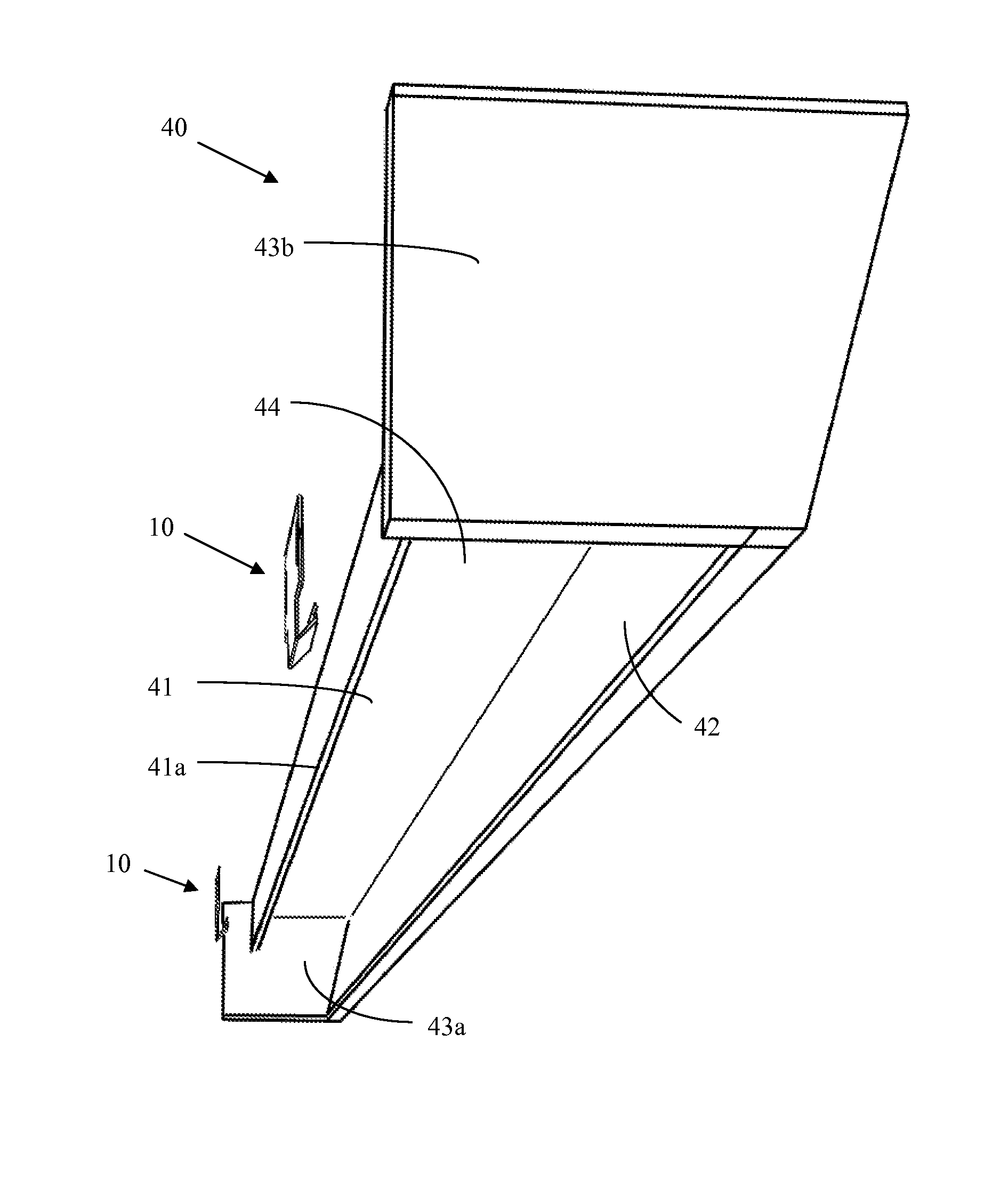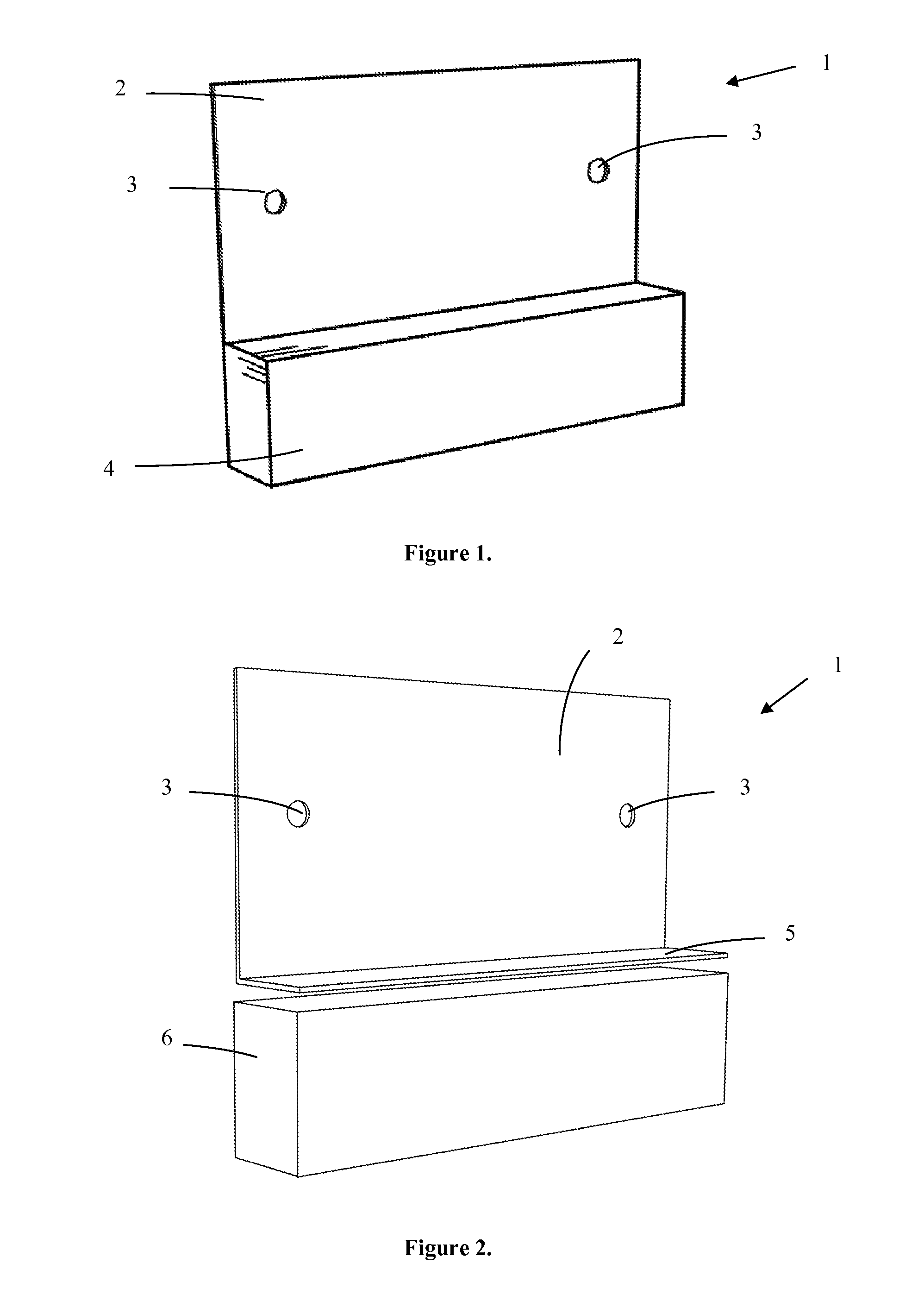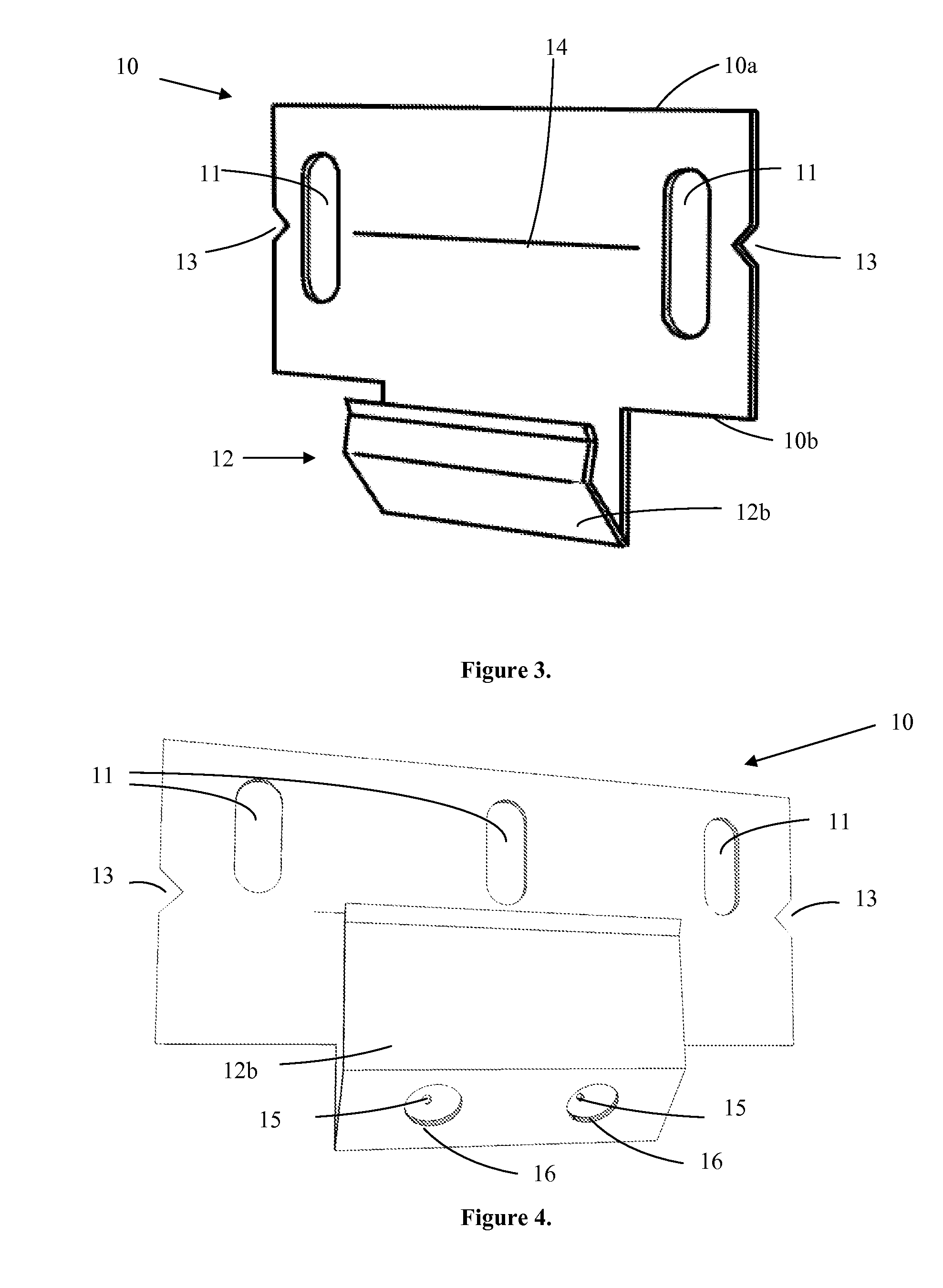Bracket and spine mounted cornice and method of use
a cornice and bracket technology, applied in the field of cornices, can solve the problems of introducing mechanical failure areas and a large amount of stress on the brack
- Summary
- Abstract
- Description
- Claims
- Application Information
AI Technical Summary
Benefits of technology
Problems solved by technology
Method used
Image
Examples
example 1
[0043]A jig allows a user to identify and correctly place holes in a wall or other surface for mounting an inventive bracket. Jig 1, seen in FIG. 1, comprises flat plate 2 having an upper edge and lower edge, and a wall face and indicator face. Position holes 3 are disposed in indicator face 2, and correspond to the mounting holes of an inventive bracket. Stop 4 is disposed on the lower edge of flat plate 2 and on the wall face of the jig. Stop 4 allows a user to place the jig against the top of a window opening and the upper edge extending upward toward the ceiling. By orienting jig 1 in this manner, the indicator face of the jig provides the correct location for drilling mounting holes for an inventive bracket. A drill can now be used in position holes 3, or the wall or surface marked for forming mounting holes. The jig is also designed such that placing the jig above the window trim allows a user to drill the position holes so that the bracket can be installed above the window tr...
example 2
[0045]Bracket 10 has a vertical face having upper edge 10a and lower edge 10b. Mounting holes 11 are disposed on its face. Mounting holes 11 of bracket 10 are specifically designed to be attached to the predrilled holes created by jig 1. As seen in FIG. 3, the holes may be oval, to permit vertical adjustments. However, mounting holes 11 may be circular, or any configuration known in the art. The lower edge of bracket 10 includes clip 12, which extends out from the face of the bracket and is used to hang the cornice.
[0046]The clip has a bend providing backward pressure on the cornice spine pulling it toward the wall. In one embodiment, a beveled clip edge extends from wall face edge 12b of the clip is positioned at a 45 degree angle from the face of bracket 10. The beveled side is opposite to a bevel edge on the spine of the cornice, placing the cornice's weight on the bracket and causing the cornice return to be further drawn against the wall.
[0047]In some variations, the brackets a...
example 3
[0049]Bracket 10 includes a vertical face having upper edge 10a and lower edge 10b. Three oval mounting holes 11 are cut into the vertical face, permitting vertical adjustment of the bracket, as seen in FIGS. 4 and 5. The inclusion of a third, middle hole permits mounting of the bracket to a surface where there is a structural member behind the surface such as a wall stud. In this case only the middle hole would be used, the bracket may self-level. Clip 12 is disposed on lower edge 10b of bracket 10 and extends out from the face of the bracket. Clip 12 has a bend adapted to interface with the cornice spine, as discussed in Example 2.
[0050]As in the above Example 2, bracket 10 may include V-cutout 13 on each side of bracket 10 with level line 14 centered between the cuts to provide a reference for leveling the bracket, as seen in FIGS. 4-6.
[0051]Clip 12 possesses wall face 12a, which is connected to lower edge 10b, and may be an extension of lower edge 10b, and spine-interface 12b. A...
PUM
 Login to View More
Login to View More Abstract
Description
Claims
Application Information
 Login to View More
Login to View More - R&D
- Intellectual Property
- Life Sciences
- Materials
- Tech Scout
- Unparalleled Data Quality
- Higher Quality Content
- 60% Fewer Hallucinations
Browse by: Latest US Patents, China's latest patents, Technical Efficacy Thesaurus, Application Domain, Technology Topic, Popular Technical Reports.
© 2025 PatSnap. All rights reserved.Legal|Privacy policy|Modern Slavery Act Transparency Statement|Sitemap|About US| Contact US: help@patsnap.com



